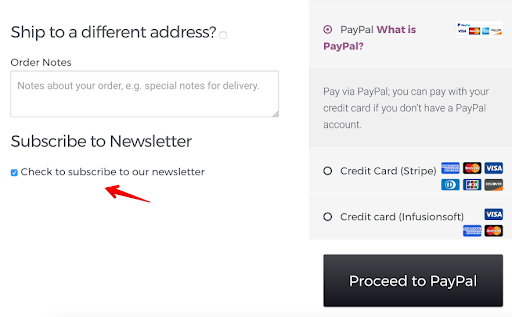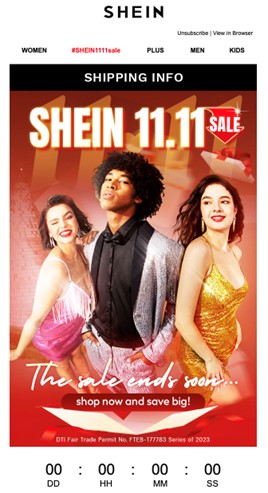A well-made marketing email makes all the difference between a slightly interested lead and a highly engaged customer. I’ve witnessed firsthand how even the smallest change in the subject line or the addition of a name to the email body can increase engagement rates. To help businesses bring out the best in their email marketing campaigns, we’re sharing our list of email marketing best practices backed by data and experience.
1. Use an Email Marketing Plan
Like most marketing efforts, email marketing is also part of science. Although email design needs creativity and message positioning may need some form of intuition, a successful email is guided by data. Learning how to create an email marketing plan may take some time, but it’s a fundamental step to help set your campaign up for success. As Alexander Graham Bell said, “Before anything else, preparation is the key to success.”
Convinced that you need an email marketing plan? Learn how to create your own, or use our downloadable email marketing plan template to get started quickly.
A brief rundown of creating an email marketing plan is:
- Researching industry data
- Studying previous campaign data
- Establishing goals, audience, and positioning
- Outlining your content strategy
- Creating a planner
- Choosing an email marketing software
There are countless benefits of an email marketing plan, like driving traffic to your website or strengthening your brand presence. But there are three benefits, in particular, that I want to highlight:

For Your Business | For Your Campaign | For Your Customer |
|---|---|---|
Ensures everything you do is aligned with a business goal | Keeps track of what you’re doing and prevents on-the-spot situations | Makes your emails more reliable and recognizable |
An email marketing plan will help you establish and follow your goals, style, and overall strategy. This translates to how your email marketing efforts affect your business, audience, and overall marketing strategy.
2. Personalize Your Content
Email marketing statistics show that a whopping 80% of consumers are more likely to buy from a brand that personalizes their experience. Personalizing your emails has evolved from a “nice-to-have” into a must-have.
Put another way, emails that use personalization tactics see higher open rates. A great and simple way of creating personalized emails is by starting it off by addressing the recipient by their name. You can take it to the next step by using the information you have from existing customers and leads, such as:
- Location
- Interests
- Previous purchases
Use this data to guide your content and customize your email depending on who you’re sending it to. Although it may seem like a lot of effort, personalization helps marketers create emails that better resonate with their target audience, leading to a more successful campaign overall.

Email marketing tips are put into action in Ancestry’s personalized subject lines and email copy.
3. Get Permission Before Emailing
The overall open rate for emails is only 21%. However, if customers signed up for the emails, that number skyrockets to 82%. This goes to show the importance of learning how to do permission-based email marketing for your business.
Permission-based emails are sent to contacts who “opt-in” to your campaigns. The permission can be overt (e.g., signing up for an email newsletter) or implied (e.g., providing information to download something from your site).

Litmus makes sure to send emails after getting permission from users. (Source: Litmus)
There are two primary ways to collect email addresses for your permission-based email marketing campaign:
Offer customers the option to subscribe during the purchase process since they’re already engaging with your brand. For ecommerce businesses, this can be an opt-in box on the checkout page. For brick-and-mortar shops, you can do a manual sign-up or a scannable QR code.

Add an opt-in feature in your POS. (Source: Infused Addons)
Most websites have at least one web form where site visitors can request information or contact the brand. Some businesses use incentives, like a free trial or consultation, to encourage people to sign up. Businesses also make use of pop-ups, splash pages, or landing pages to host their sign-up forms.

Embed a sign-up form on your website to collect emails. (Source: Morning Brew)
Permission-based email marketing is one of the most effective ways to nurture leads and stay connected with your customers. Not only does it ensure that you send your marketing emails to people who are interested, but it also lessens the chance of your emails being flagged as spam.
4. Use Short & Catchy Subject Lines
Your email’s subject line is the first thing a customer reads, and it helps them decide whether they want to click on your email, leave it in their inbox to be forgotten, or, worse, mark it as spam.
Create subject lines that build up excitement and curiosity because that urges readers to read more about the content you put up in your email. Even though you want your email subject line to be descriptive, make sure that you keep it concise so that the entire subject line will still be visible.
The Washington Post has mastered concise yet compelling email subject lines. (Source: The Washington Post)
The best email subject line length depends on a number of factors like audience preference or content relevance (you can get these from existing campaign data). For different devices or email clients, here are the recommended lengths:
Email Client | Best Email Subject Line Length |
|---|---|
Gmail | 70 characters |
Outlook | 50-70 characters |
Yahoo! | 40-45 characters |
iPhone | 40-65 characters |
Android | 50-70 characters |
Windows | 40-60 characters |
(Source: Engage Bay) | |
It is also a good idea to avoid subject lines often used in spam emails because they can push your customers to opt out of receiving your emails. Some buzzwords, symbols, and phrases to avoid are: “!!!,” “$$$,” “dear friend,” and “fast cash.”
Need more guidance in crafting the perfect email subject line? GetResponse has a native artificial intelligence (AI) writer that helps build fantastic email copy. Sign up for a free trial or head to its website by clicking the button below.
5. Focus Above the Fold
You know how when you open a marketing email you need to scroll down to see the entire thing? That’s exactly what marketers refer to as an email fold. It is the point on a screen where a subscriber can’t see any more content without scrolling.
It’s prime real estate and your opportunity to turn a three-second reader into one who will finish your entire email. At the same time, if a reader chooses to exit your email within just a few seconds, at least you’d be able to establish your email’s message with them before the reader bounces off.
A few ways to take advantage and keep people’s attention to the top fold of your email are:
- Overview of content
- Discount voucher or promotion
- Bright, compelling visuals
- Your call to action
Semrush’s monthly newsletter uses a splash of color right at the top of their email, along with concise language and an overview of content (with clickable links as a call to action), all on the top fold. It’s short, sweet, and effective.

The top fold of Semrush’s emails has an overview of the email content. (Source: Semrush)
6. Use Links Strategically
Links inside your email don’t necessarily need to feel like an attempt to make a sale. Strategically placed links can help improve the reader experience as long as they’re natural and complement the flow of your content.
Links give your audience a clear path to valuable information, may it be a specific product or service on your site, a discount code, a blog, or a landing page. Additionally, ecommerce businesses can create a page for an exclusive collection of featured items and then have a link direct to it. This will make it easy for subscribers to explore relevant products with a single click.
Also, don’t hold back in using interactive elements like buttons. Well-designed and well-placed buttons can be effective for directing attention to key sections of your content. Make sure that your buttons include a clear and compelling call to action to encourage more clicks.
7. Prioritize Mobile Readers
Email marketing and mobile devices go hand-in-hand. In fact, most email is read from mobile devices. This powered the shift in email layout and design to focus on mobile users—which is now one of the most necessary email marketing best practices. Creating a mobile-friendly email makes it easier for people to understand your content and, optimally, pursue a call to action directly on their phones.
Here are a couple of marketing email best practices to make your email mobile-friendly:
- Use a single-column layout: This format works well on mobile devices, allowing users to scroll easily without the need for horizontal navigation. It also ensures that your content remains readable and visually appealing on smaller screens.
- Increase font sizes: A bigger font size helps improve readability on smaller screens. Aim for a minimum font size of 14 to 16 pixels for body text. Also, use clear and legible fonts since it can be even more difficult to read on mobile.
- Keep your content concise and to the point: Mobile users have loads of apps and things to do on their phones, so they often skim through emails quickly. This makes it important to capture their attention with brief and engaging content. Use short paragraphs, bullet points, and headers to break up text and make it more digestible.
- Make your buttons touch-friendly: If your email includes buttons or calls to action, ensure they are large enough and easily tappable. Consider using a touch-friendly size of at least 44×44 pixels to accommodate users interacting with their fingers.
Pro tip: Use responsive email templates from reliable email marketing providers to automatically adjust the layout and content of your email depending on what device is used to view it.
Email Marketing Best Practices: Best Tools to Use
The providers below have some of our top tools to use for email marketing. Additionally, they all have free or affordable starting costs, strong analytics, and user-friendly tools that any small business can find valuable.
 |  |  | |
|---|---|---|---|
Starting Cost/Month | Paid plans from $7.49 per month | Free plan up to 500 contacts; paid plans from $13 per month | Paid plans from $12 per month |
Free Plan |
|
|
|
Frequently Asked Questions (FAQs)
Email marketing is a digital marketing strategy that involves sending emails to promote products and services or to engage with customers. It’s a powerful way to communicate and build relationships with a target audience.
The best practices for email marketing include personalization, using a permission-based email marketing strategy, and keeping your email subject line and content descriptive yet concise. These email marketing best practices are shown to help increase email open and click rates.
Yes, it’s crucial to obtain explicit consent from individuals before sending marketing emails to comply with laws like GDPR and CAN-SPAM. Gaining permission is both an ethical and legal requirement in many countries.
Bottom Line
As email marketing continues to be a powerful way to communicate with customers, businesses are challenged to create marketing emails that are effective without getting lost in the sea of emails people receive every day. Email marketing best practices, like getting permission, strategic linking, and mobile friendliness, are just some of the ways to ensure a great email experience while helping increase open and engagement rates.

